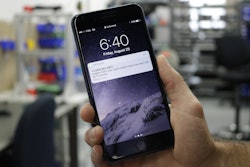The unveiling of the iPhone X was the most eagerly anticipated part of Apple's launch extravaganza yesterday. The new handset made a daring design move in ditching the home button while it now boasts a facial scanner and the ability to make animated emojis. For some fans, the enthusiasm of the event and the enormous hype surrounding the iPhone X will be tampered by the device's exorbitant price tag.
The iPhone X will cost between $999 and $1,149 for U.S. users. That makes it the most expensive iPhone to date, costing more than the iPhone 6s and 7 Plus, both of which hit the market at $949 (256GB). Back when the original iPhone was unveiled by Steve Jobs in 2007, the 4GB version of the device cost $499 and the 8GB version cost $599 (both requiring a 2-year contract).
Apple is about to hold its biggest event of the year and unveil one of its most important products ever: the iPhone X. Leaks over the weekend suggest that the new handset is going to be the biggest upgrade since the original iPhone's launch 10 years ago. The most notable change will more than likely involve a completely new all-screen design and the elimination of the home-button on the front.
iPhones have always been expensive, proving vitally important to Apple and accounting for the lion's share of the company's revenue. Still, the iPhone X is expected to come with a hefty $1,000 price tag, making it the most expensive iPhone ever. iPhone revenue as a percentage of Apple's total revenue reached its peak in 2015 at 69 percent before falling to 55 percent in the third quarter of this year. It will be interesting to see how the steep price of the new device influences Apple's revenue stream in the months ahead.























